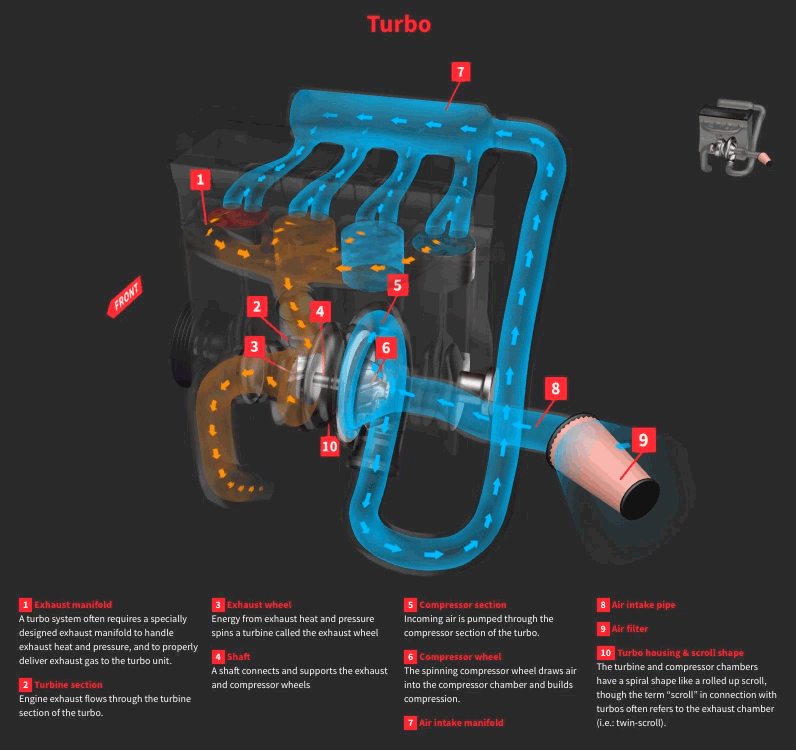Let's have some mechanics – part 2 - for Dummies
Previously on LHSM
As you already know, we have talked about how an engine create power in the first part of the “Let’s have some mechanics - For dummies” , if you had lose it, please go to read that post immediattely or i will never talk to you again!
We have seen, the movement performed by the pistons in the cylinder, and we also know what it takes a Diesel engine to create an explosion in the combustion chamber.
A closer look at some topics
Now it's time to take things a bit 'seriously and talk in depth about the two elements necessary for proper combustion (better not to mention compression now, we will spend a lot of time in another post):
- Fresh Air
- Gasoil
And the result after the combustion created by those elements:
- Exhaust air
Fresh air and Exhaust lines
Diesel engines are mainly made in two different types:
Naturally aspirated engines:
In this case there isn't anything except a filter, the air naturally goes in the combustion chamber only moved by depression generated by pistons while going down.
In the exhaust cycle, the waste air is simply conveyed out of the engine by means of a manifold.
Turbocharged engines:
In that case the fresh air is mechanically aspirated by a turbocharger that compresses the air and sends it into the combustion chamber, generating pressure and ensuring high performance.
The exhaust, this time, will be conveyed into a manifold, which will reconnect to the turbocharger turning the fan of the "fire" side, thus generating the necessary thrust to move the fan in the inlet side.
All Cear? I really hope not, cause I have one fantastic pics to show you, thanks to Wikipedia and tyroola that makes the gif with a CC0 licensing.

As You can see, we have three different moments, when the piston start going down, using his depression power, helps the turbocharger air inlet impeller turning, when we have the exhaust cycle, pistons start going up making pression that moves the exhaust turbocharger's impeller.
The greater the revolutions per minute achieved by the engine, the greater the clean air pressure produced by the turbine, consequently there will be more air and more pressure in the combustion chamber, under these conditions a much cleaner combustion is generated than it can take place in an aspirated engine.
And.. that's all
I’ve finished my second "LHSM" post, its important that who read understand that there are a lot of different type of engines, and also different type of turbocharger, like fixed geometry or variable geometry, or with a volumetric compressor blower, or with a exhaust recirculation, EGR sistems and a looooot more than this.
I just would like to be able to bring people closer to the engine mechanics, starting from the bases and trying to understand, for now, the physics of the functioning of an engine
Thanks again, and see you soon.
I love the turbo in my mitsubishi pajero! <3
Everybody loves turbos :D
Thanks for your support!
Not everyone. But dunno what's wrong with the people who don't..^^
No prob dude :)
I've got some stories about my #xt restauration upcoming next.
Would be cool if you stopped by. ;)
stay tuned
greets from germany
You got a 5.69% upvote from @inciter courtesy of @ilbirraiooo!